How to Sync Moving Head Lights with Music
- How to Sync Moving Head Lights with Music — Practical Steps for DJs and Lighting Techs
- Why syncing moving head dj lights to music matters
- Understand the basics: moving head dj lights and how they respond
- Choose the right moving head dj lights for music sync
- Control protocols: DMX, Art-Net/sACN, and MIDI — what to use
- Audio analysis and beat detection for syncing moving head dj lights
- Programming techniques: cues, timelines, and effects stacks
- Real-time control strategies for DJs using moving head dj lights
- Troubleshooting common issues when syncing moving head dj lights
- Hardware and software recommendations for syncing
- Comparison: When to use pre-programmed cues vs. live audio-reactive control
- Integrating LQE solutions with your moving head dj lights workflow
- How LQE’s product strengths support music-sync workflows with moving head dj lights
- Practical checklist before a show
- Table: Quick protocol guide for DJs and technicians
- FAQ — Frequently Asked Questions about syncing moving head dj lights
- Q: Can I sync moving head dj lights without a lighting console?
- Q: What’s the most reliable way to sync during a live DJ set?
- Q: Will audio-reactive lighting always look good with any genre?
- Q: How many moving head dj lights can I control from a single console?
- Q: How should I troubleshoot flickering or stuttering movement?
- Contact us / View Products — Ready to upgrade your moving head dj lights?
- Sources
How to Sync Moving Head Lights with Music — Practical Steps for DJs and Lighting Techs
Why syncing moving head dj lights to music matters
Syncing lights to music transforms a show: it increases audience engagement, reinforces musical peaks, and creates memorable visuals that match the energy of the set. For DJs and venue operators using moving head dj lights, good synchronization improves perceived production value without needing more fixtures — it’s about timing, control, and the right workflow.
Understand the basics: moving head dj lights and how they respond
Moving head dj lights are motorized fixtures with pan/tilt movement, interchangeable gobos, zoom, color wheels, and often beam, wash, or hybrid capabilities. They respond to external control signals (DMX, Art-Net/sACN, OSC, MIDI) or onboard programs. To sync lights with music you must bridge audio (beats, tempo, song structure) and lighting (cues, scenes, effects). Key variables include latency, control granularity, and how cues are triggered.
Choose the right moving head dj lights for music sync
Not all moving heads are equal for music-driven shows. For reliable synchronization, prioritize:
- Fast and accurate pan/tilt motors (low slew time)
- Wide zoom range and sharp beam for strobe/beam effects
- High CRI/color fidelity for washes and profiles
- Flexible control modes (DMX channel modes, RDM support, Ethernet like Art-Net/sACN)
- Good onboard effects (prism, frost, gobo animation) to reduce programming complexity
When searching or buying, include “moving head dj lights” in your queries to find fixtures designed with clubs, DJs, and touring use in mind.
Control protocols: DMX, Art-Net/sACN, and MIDI — what to use
Understanding control protocols helps you pick a workflow. Here’s a concise comparison to guide choices:
| Protocol | Latency | Channels / Scale | Best use |
|---|---|---|---|
| DMX512 | Low (single universe limited) | 512 channels / universe | Small to medium rigs; direct console control |
| Art-Net / sACN (Ethernet) | Low, scalable | Many universes, high capacity | Large shows, distributed setups, networked control |
| MIDI | Very low for CC/Note triggers | Not channel-based for lights; used as triggers | Triggering scenes or tempo-sync from music gear/DJ decks |
| OSC | Low to medium | Flexible message-based | Custom integration with software and audio engines |
Sources: DMX512, Art-Net and MIDI specifications (see sources list below).
Audio analysis and beat detection for syncing moving head dj lights
There are two main approaches to translate music to lighting actions:
- Pre-programmed cueing: Analyze the track in advance, create cues aligned with song structure, and trigger them during performance. Best for fixed playlists or theatrical sets.
- Real-time audio reactive: Use beat detection algorithms or hardware that listens to live audio and triggers effects on the fly. Best for club DJs and unpredictable sets.
Real-time beat detection can be implemented with:
- Lighting consoles with audio-follow or BPM detection (many consoles provide onboard audio-follow functions).
- Dedicated hardware audio-to-DMX convertors that output DMX based on frequency bands and thresholds.
- Software solutions (Qlab, Lightjams, Resolume, MadMapper, TouchDesigner) that analyze the audio and send Art-Net/OSC/DMX commands.
For accurate results, use a near-field line input from the DJ mixer or a direct tap from the desk rather than relying on a microphone in the venue, which introduces latency and noise.
Programming techniques: cues, timelines, and effects stacks
Effective synchronization relies on good programming. Use these techniques:
- Markers and beats: Place timeline markers at downbeats and musical transitions. Snap cues to these markers so movement and strobe happen on the beat.
- Layered effects: Combine base looks (color/wash) with an effects layer (beam sweep, strobe on beat). Layers allow quick changes without rebuilding entire scenes.
- Snapshots and chases: Use snapshots for instant scene recall and chases for rhythmic movement that follows tempo.
- Parameter linking: Link multiple fixtures so a single tempo control drives pan/tilt speed across the rig, keeping the whole stage coherent.
Practice building compact cue lists that are easy to navigate during a live DJ set; over-complex consoles slow reaction time.
Real-time control strategies for DJs using moving head dj lights
DJs need quick, reliable ways to react to music. Common workflows include:
- MIDI-to-light mapping: Map DJ controller MIDI pads/knobs to lighting scenes—trigger intros, drops, and build-ups instantly.
- Tap tempo: Use tap-tempo input on the console or lighting software to match the current BPM and let tempo-synced effects follow.
- Audio follow with adjustable sensitivity: Use audio-follow mode but keep sensitivity, band-pass filters, and attack/release tuned for the genre and PA levels.
For club environments, preset recall via a simple controller or footswitch can be more reliable than attempting to program complex changes mid-set.
Troubleshooting common issues when syncing moving head dj lights
Problems you may face and how to solve them:
- Perceived latency: If fixtures seem behind the beat, check signal path: audio source → analysis device → lighting controller → fixtures. Eliminate microphone inputs, use wired audio taps and Ethernet distribution.
- Out-of-sync fixtures: Ensure all fixtures receive the same time base (Art-Net universes synced) and avoid mixing DMX and Ethernet without proper gateways.
- Noisy beat detection: Use band-pass filtering in software to focus on kick/low-frequency energy for most dance music.
- Overwhelming CPU/network load: Spread universes over multiple DMX nodes and prioritize critical effects to avoid dropped frames.
Hardware and software recommendations for syncing
Pick tools that match your venue size and budget. Typical setups:
- Small clubs: 8–16 moving head dj lights controlled by a compact lighting console or a laptop running Lightjams connected via a small Art-Net node.
- Medium venues: 16–40 moving heads with a full-featured console (e.g., grandMA, Hog) or a PC with robust software and network nodes.
- Fests/touring: Use networked Art-Net/sACN, timecode (MTC), or SMPTE-based triggering for large shows; integrate with show control systems.
For DJs who prefer plug-and-play, hardware audio-to-DMX converters and fixtures with onboard audio mode provide a fast route to audience-ready visuals.
Comparison: When to use pre-programmed cues vs. live audio-reactive control
Decision factors:
- Predictability of set: Pre-programmed works best for fixed sets; audio-reactive for unknown DJ input.
- Complexity of visual narrative: If visuals must hit exact lyrical or musical moments, pre-programmed timeline cues are superior.
- Resources and personnel: If the show lacks a dedicated lighting operator, reliable audio-reactive modes or simple MIDI mappings help DJs control visuals themselves.
Integrating LQE solutions with your moving head dj lights workflow
LQE was founded in 2008 and is headquartered in Foshan, China. We are a professional OEM/ODM stage lighting equipment manufacturer specializing in the R&D, production, and sales of middle- and high-end digital stage lighting. Our production base covers an area of about 10,000 square meters, has the ability to produce 100,000 lighting fixtures annually, and has 80 national patents.
Our range of stage lighting equipment is diverse, including various moving head lights and static lights, suitable for applications in theaters, music concert stages, studios, broadcasting, religious spaces, exhibitions, nightclubs, leisure venues, theme parks, and more.
We are committed to providing first-class modern stage lighting equipment and exceptional customer service, all while maintaining the best value and cost-effectiveness in the industry. Our goal is to deliver high-quality, long-lasting lighting solutions that help stage designers and producers realize their vision.
Our vision is to become the world's leading manufacturer of LED stage lighting.
How LQE’s product strengths support music-sync workflows with moving head dj lights
LQE’s manufacturing scale and R&D focus mean consistent quality, fast lead times, and a wide product range for DJs and venues:
- Robust moving head ranges (beam, hybrid, wash, profile) built for fast movement and accurate color reproduction — ideal for tempo-synced effects.
- Options for waterproof stage lighting and IP-rated fixtures suitable for outdoor festivals and rainy conditions.
- Good compatibility with DMX, Art-Net, and common control standards, facilitating integration into modern lighting networks.
- Accessory and service support — spare parts and technical advice from an OEM/ODM manufacturer.
Main products and core competencies: Waterproof stage lighting, beam moving head light, Moving head hybrid light, Moving head wash light, moving head profile light, LED effect light, LED studio light, LED par light, Lighting accessories. LQE’s competitive advantages stem from scale manufacturing, R&D patents, and a focus on middle- and high-end digital fixtures that balance price and performance.
Practical checklist before a show
Use this checklist to minimize issues:
- Confirm audio feed directly from DJ mixer to lighting processor for beat detection.
- Verify all fixtures are patched and addressed correctly (DMX/Art-Net universes checked).
- Run a network health check if using Art-Net/sACN (no IP conflicts, stable switches).
- Test latency by triggering a flash at the beat and check perceived sync from audience and FOH positions.
- Prepare fallback scenes—simple looks that can be triggered if automation fails.
- Label physical cabling and control ports for quick troubleshooting.
Table: Quick protocol guide for DJs and technicians
| Need | Recommended protocol | Why |
|---|---|---|
| Simple club with few fixtures | DMX (single universe) | Straightforward, low-cost, low-latency |
| Large dispersed rig or festival | Art-Net / sACN | Scalable across multiple universes; networked control |
| DJ wants tactile control | MIDI mapped to scenes | Easy, low-latency control from DJ gear |
| Creative audio-reactive visuals | Software (Lightjams / TouchDesigner) + Art-Net | Flexible mapping of audio features to light parameters |
FAQ — Frequently Asked Questions about syncing moving head dj lights
Q: Can I sync moving head dj lights without a lighting console?
A: Yes. You can use software (Lightjams, Resolume, QLC+) with an Ethernet-to-DMX node (Art-Net/sACN), or hardware audio-to-DMX converters. Many fixtures also include onboard audio-follow modes for basic synchronization.
Q: What’s the most reliable way to sync during a live DJ set?
A: Use a direct audio feed from the DJ mixer into a beat-detection processor or map MIDI from the DJ controller to lighting scenes. Ensure tap-tempo and sensitivity are available for quick manual adjustments.
Q: Will audio-reactive lighting always look good with any genre?
A: Not always. Electronic dance music with strong low-frequency beats works best for simple beat-driven effects. For complex or dynamic genres, consider hybrid approaches (audio-reactive for energy, manual cueing for key musical events).
Q: How many moving head dj lights can I control from a single console?
A: It depends on the fixture’s DMX channel mode and universe capacity. A standard DMX universe supports 512 channels; with fixtures using 16–30 channels each, a single universe can typically handle 10–30 fixtures. Use Art-Net/sACN to expand across many universes for larger rigs.
Q: How should I troubleshoot flickering or stuttering movement?
A: Check network stability (for Art-Net/sACN), DMX cabling quality, power supply issues, and console CPU/network load. Isolate a fixture to confirm whether it’s a single fixture fault or systemic.
Contact us / View Products — Ready to upgrade your moving head dj lights?
If you want fixtures engineered for music-driven shows, explore LQE’s product range or contact our technical sales team for recommendations tailored to your venue and budget. We provide detailed product specs, control compatibility guidance, and support for integration into DMX, Art-Net, or MIDI-based workflows. Reach out to view products, request datasheets, or arrange a demo.
Sources
- USITT / Wikipedia — DMX512 (history and specifications)
- Art-Net specification — Artistic Licence documentation
- MIDI Association (MIDI.org) — MIDI protocol overview
- Lightjams, Resolume, TouchDesigner product documentation (audio-to-light techniques)
- Music Information Retrieval literature — beat detection and tempo estimation (textbooks and academic surveys)
For personalized advice on fixtures and control architectures for syncing moving head dj lights, contact LQE’s technical team — we combine production scale, patented R&D, and fixture diversity to help you achieve powerful, reliable music-synced lighting.
How to Choose the stage lighting equipment manufacturer and supplier in us?
The latest trends for professional stage lighting in us 2026 | LQE Ultimate Insights
Top 10 china stage lighting factory Manufacturers and Supplier Brands
Everything You Need to Know About moving head dj light
1000w
What Kind of Certificates You Offer?
All kinds of certificates could be offered by LQE digital moving light factory, which depends on customer’s required, different pricing plan for different approval.
Do You Supply After-Sale Service?
LQE lighting offers 7x24 hrs systematic SOP customer support with dedicated personnel, ensuring quick and comprehensive assistance for stage lighting needs.
Distributor
What are the advantages of becoming an LQE distributor?
Access to high-performance, patented lighting products
Competitive factory pricing and excellent profit margin potential
Strong R&D capabilities with 80+ national patents
Reliable production capacity: 100,000 units annually
Dedicated account manager to support your growth
Can LQE help with product training and technical guidance?
Absolutely. We offer remote training sessions, user manuals, installation guides, and continuous technical support to help your team understand and sell our products with confidence.
How can I apply to become a distributor?
Simply fill out the contact form on this page or email us directly with your company information, market background, and cooperation intention. Our sales team will get in touch with you within 1–2 business days.
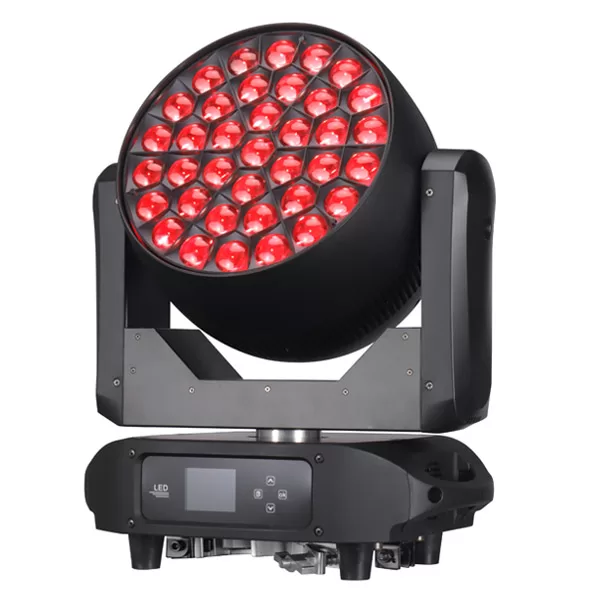
800w 37x40w RGBW Stage Moving Head Wash Light LW800
800W 37x40W LED RGBW Mulichips Moving Head Wash Lights with Zoom (5°-50°), Covering Large Range and Long Distance. Designed to deliver a 5°–50° ultra-large zoom range to achieve a greater wash effect, illuminating stages and events with stunning ring control lighting effects.

600w 19x40w RGBW Stage Moving Head Wash Light LW600 Zoom IP20
600W 19x40W LED RGBW Mulichips Moving Head Wash Lights with Zoom (5°–50°), Covering Large Range and Long Distance. IP20: Designed to deliver a 5°–50° ultra-large zoom range to achieve a greater wash effect, illuminating stages and events with stunning ring control lighting effects.
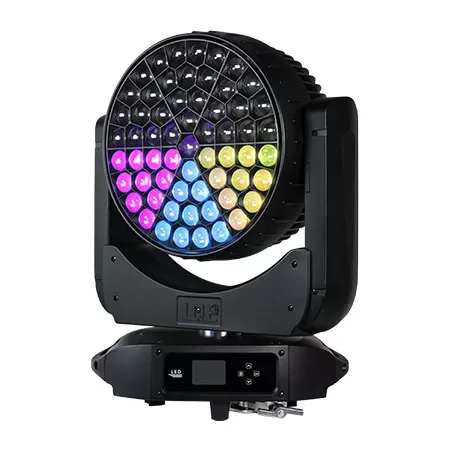
1000w 61x40w RGBW Stage Moving Head Wash Light LW1000
1000W 61x40W LED RGBW Mulichips Moving Head Wash Lights with Zoom (5°–50°), Covering Large Range and Long Distance. Designed to deliver a 5°–50° ultra-large zoom range to achieve a greater wash effect, illuminating stages and events with stunning lighting effects.

LED Moving Head Stage Wash Light LW200Z
The versatile moving head stage light provides a powerful lighting solution for theaters, concerts, and large outdoor performances. Suitable for theaters, TV stations, entertainment stages, and large outdoor performance scenes.

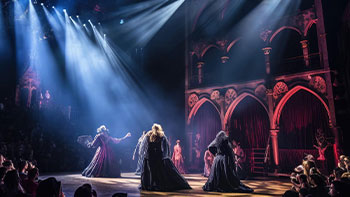
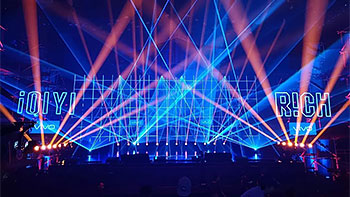

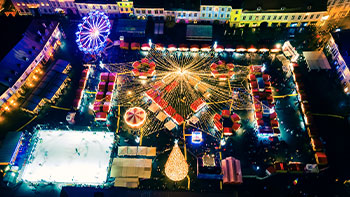








Linkedin
YouTube
Whatsapp: +8618924548390
TikTok